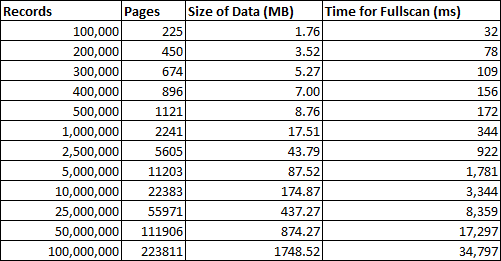Even though SQL Server automatically updates statistics in the background for you, you may find there are times when you want to manage updating them yourself.
- You may have large tables and find that the interval between the automatic updates is too big and is resulting in sub-optimal query plans.
- You might need timely updates to a specific object – maybe as part of an ETL process to make sure that statistics are up to date after a particular part of the process, perhaps after a daily load into a table.
- You may find that the automatic updates look at too small a sample size and you need to scan more of the table to enable accurate estimates for your queries.
My previous post on the Ascending Key problem demonstrated a common issue where the first of these scenarios could be affecting you. We’ll look at examples of the other scenarios in subsequent posts.
For now though, let’s just look at how you go about updating statistics.
UPDATE STATISTICS
At the heart of all the methods we’ll look at is the UPDATE STATISTICS command. There are a lot of options for using this command, but we’ll just focus on the ones you’re most likely to use. For full documentation here is the official reference:
https://docs.microsoft.com/en-us/sql/t-sql/statements/update-statistics-transact-sql
You can use this at the table level in which case all statistics objects belonging to that table will be updated:
UPDATE STATISTICS dbo.Test;
Or you can specify the specific statistics object you want to update:
UPDATE STATISTICS dbo.Test _WA_Sys_00000002_3AD6B8E2;
FULL SCAN or SAMPLE
The other thing you may be likely to want to specify is whether the statistics should be updated using a full scan of the table, or just be looking at a sample of the rows. In the above examples we didn’t specify this so SQL Server will decide for us. In general sampling (as opposed to full scans) kicks in when we have about 8MB of data in the table (or about 1000 pages).
If you want to specify a full scan the syntax is as follows:
UPDATE STATISTICS dbo.Test _WA_Sys_00000002_3AD6B8E2 WITH FULLSCAN;
If you want the statistics update to use sampling (more on how this works in subsequent posts) then you can choose to specify a percentage of the total table to be sampled:
UPDATE STATISTICS dbo.Test _WA_Sys_00000002_3AD6B8E2 WITH SAMPLE 10 PERCENT;
Or you can specify a fixed number of rows:
UPDATE STATISTICS dbo.Test _WA_Sys_00000002_3AD6B8E2 WITH SAMPLE 10000 ROWS;
You might want to use a sample as once your tables get large full scans can take a little time. Equally though if you’re updating statistics in a quieter time (e.g. overnight) you may feel you can afford the extra time for the full scans. Here’s some comparison figures I produced on my local machine showing how long full scans take. Obviously this will change depending on your hardware and other factors including how much of the table is already in memory:

You can see however that the time taken pretty much scales linearly as the table size increases.
One thing to be aware of is parallelism. A full scan can run as a parallel operation on your server which can speed it up considerably. When you update statistics using a sample however this can only run single-threaded unless you’re on SQL Server 2016 (or higher). Sampling data to build statistics in parallel was one of the many excellent little improvements in 2016.
sp_UpdateStats
This is another method you might use for manually updating statistics (perhaps as part of a scheduled maintenance job). This system stored procedure can be used for updating all of the statistics objects in a database:
USE Test; EXEC sp_UpdateStats;
This stored procedure iterates through your database using a WHILE loop and executes the UPDATE STATISTICS command as it goes. One nifty thing about using this procedure is that it only updates statistics objects where rows have changed, so you don’t have any overhead for refreshing statistics where the underlying data hasn’t been modified. You can see this from this extract of the output of the stored procedure:
Updating [dbo].[TestMemory]
[PK__TestMemo__3214EC070D799003], update is not necessary…
0 index(es)/statistic(s) have been updated, 1 did not require update.
Updating [dbo].[TestMemory2]
[PK__TestMemo__3214EC07D3DC52DE], update is not necessary…
0 index(es)/statistic(s) have been updated, 1 did not require update.
Updating [dbo].[Test]
[PK_Test] has been updated…
[IX_Test_TextValue] has been updated…
2 index(es)/statistic(s) have been updated, 0 did not require update.
Ola Hallengren
Of course, if you’re looking to implement statistics update as part of regular maintenance, then you should definitely be considering using Ola Hallengren’s maintenance solution. Ola maintains a great solution for managing database backups and integrity checks as well index and statistics maintenance, and he shares it with the SQL community for free.
You can find full details of Ola’s solution and download it here:


